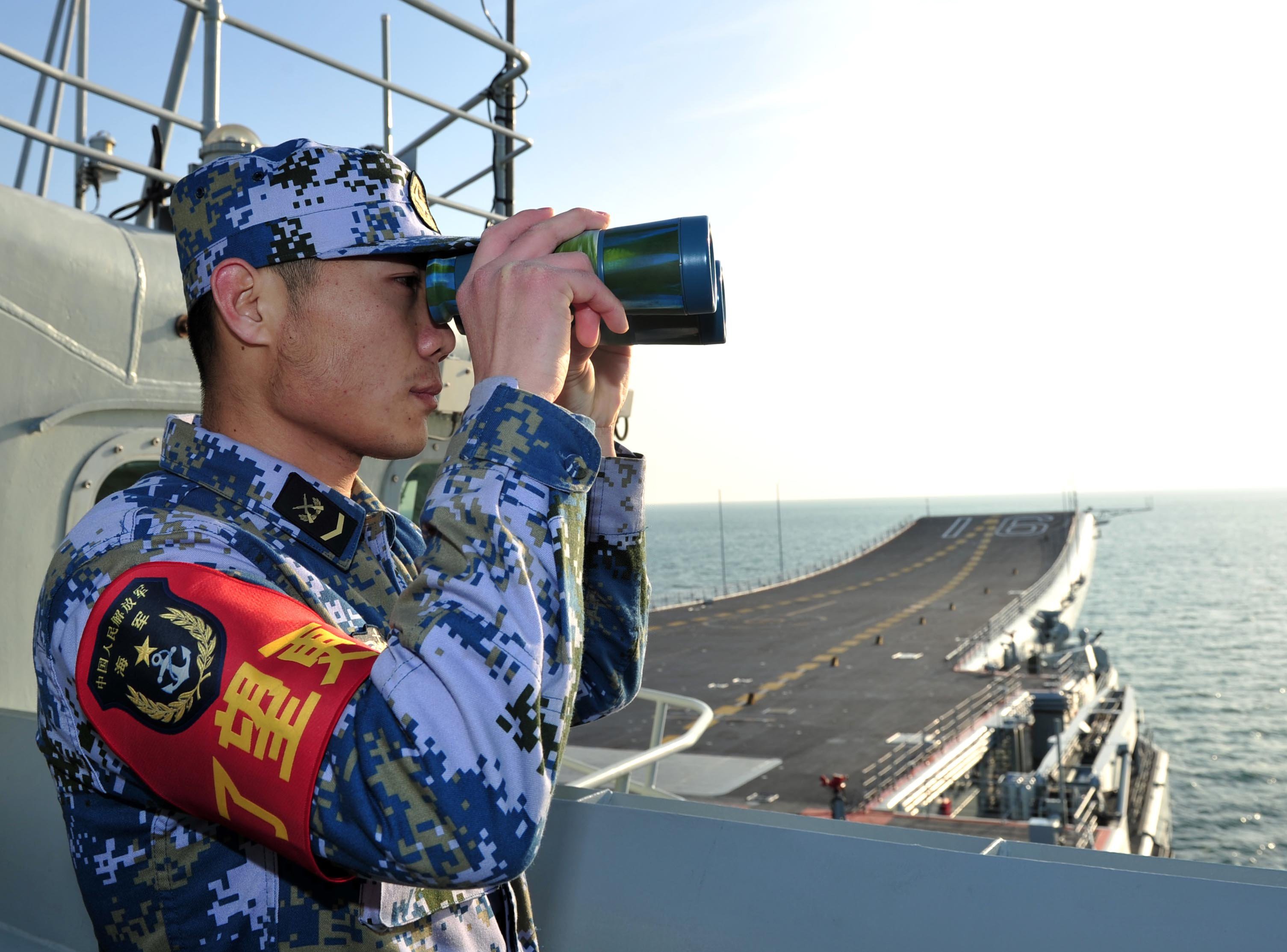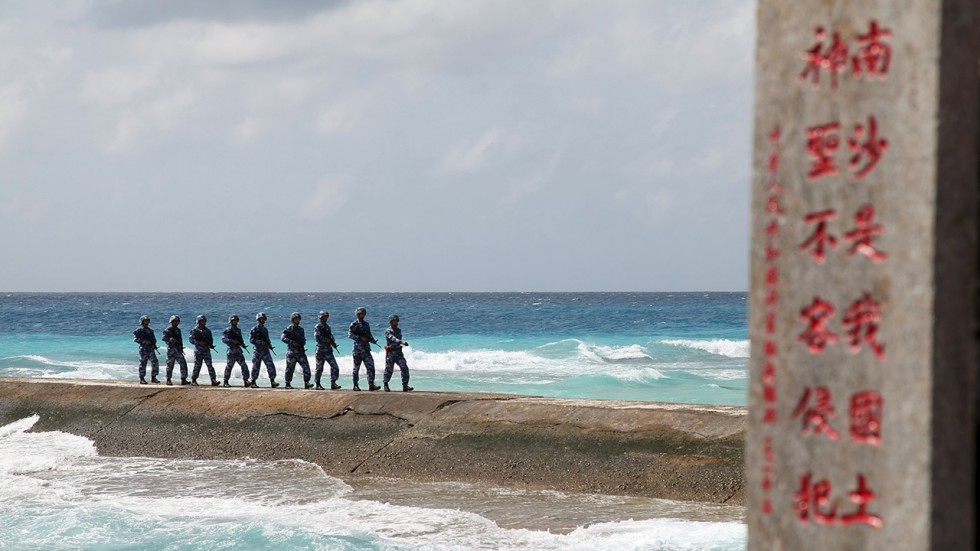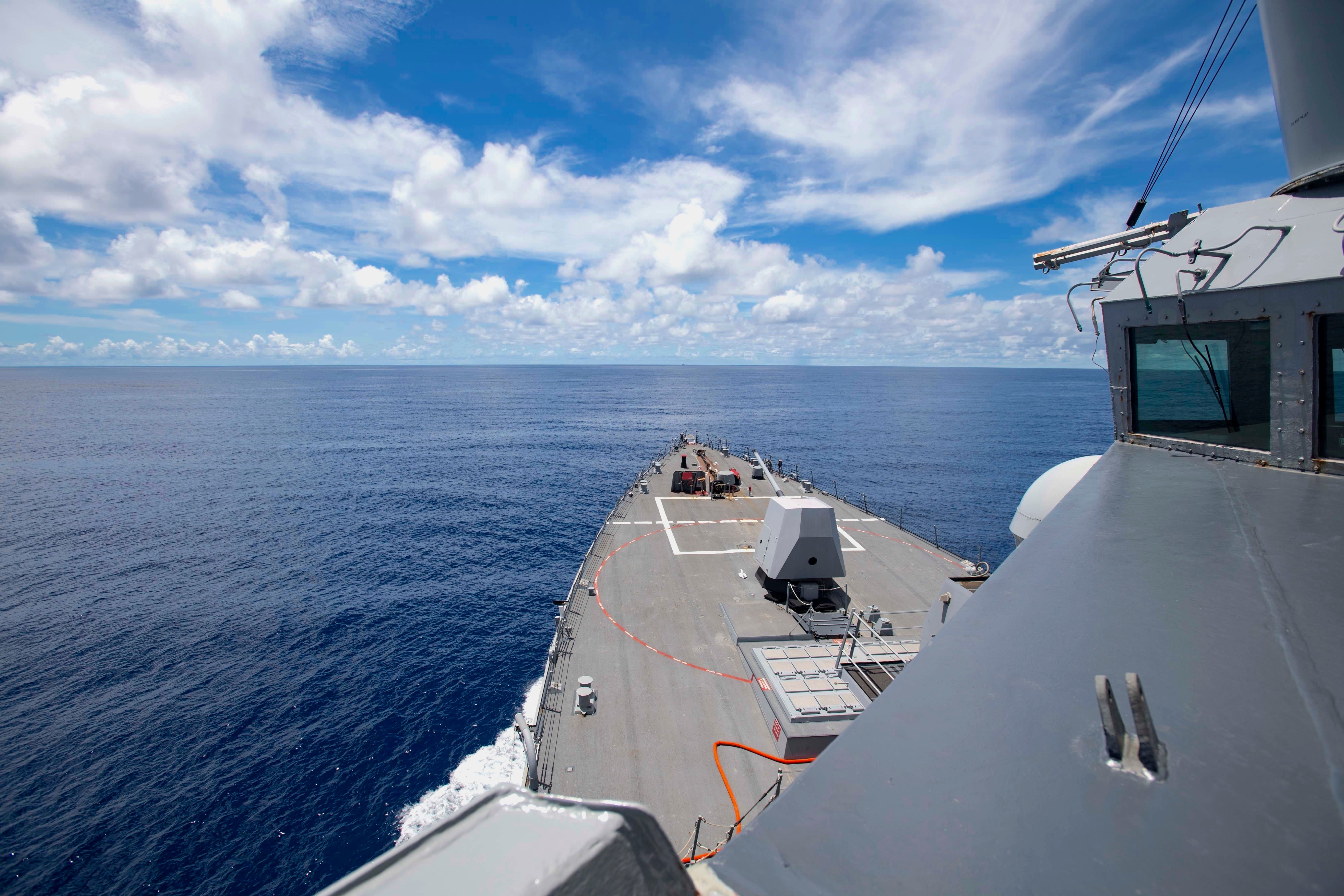
KUALA LUMPUR, Malaysia – Chinese naval ships have every right to operate in Australia’s exclusive economic zone, just as Australia and other countries have the right to freedom of movement in the South China Sea, Australian Prime Minister Scott Morrison said Friday.
During a press conference today in South Australia, Morrison was asked about reports that the People’s Liberation Army Navy (PLAN) surveillance vessel Yuhengxing (798) had been conducting surveillance off Australia for three weeks in August and September.
“They have every right to be there under international maritime law, just like we have every right to be in the South China Sea, and other free liberal democratic countries have every right to be having freedom of movement in the South China Sea. Our movements in the South China Sea and those of other countries has been an issue of challenge to Australia,” Morrison said.
Morrison went on to say that because Australia has stood up for its right to be in the South China Sea, emphasized freedom of speech and freedom of the press, and is building up its defense capability – including the construction of nuclear powered submarines – China has taken up issues with Australia and the two nations have a strained relationship. Morrison added that these issues, however, “are not issues that any self-respecting government like Australia’s, or indeed any self-respecting liberal democracy, would ever give ground on.”
The Australian Prime Minister said the situation demonstrated that no one could be complacent in the Indo-Pacific.
“They have every right to be where they are. We knew they were there and they are, they are able to be there under international maritime law,” Morrison said. “But don’t think for a second that we weren’t keeping our eye on them, as they were seeking to keep an eye on us. What it demonstrates is now no one can be complacent about the situation in the Indo-Pacific.”
Australia’s Daily Telegraph reported on Friday that the vessel was seen circling Australia’s coast for three weeks in August and September, and that sources had informed the paper that the ship entered Australia’s 200-kilometer EEZ off the coast of Darwin in August before slowly heading south, hugging the coastline and monitoring a number of crucial military training areas as it traveled as far south as Sydney. The surveillance ship then went across the Tasman Sea towards New Zealand. In response to media queries on the matter, Australia’s Department of Defence supplied a photo of the ship in question, identifying it as the Yuhengxing.
Australian Defence Minister Peter Dutton on Friday criticized China in a speech at the National Press Club of Australia, stating that while the Chinese government says it will work with other countries to maintain freedom of navigation and safe maritime routes, and address peaceful territorial disputes with dialogue and consultation, what actually happens is different.
“And yet we bear witness to a significant disconnect between words and actions, between the rhetoric and reality. Along with peoples of the Indo-Pacific and the world, Australians have watched on as the Chinese government has engaged in increasingly alarming activities,” Dutton said.
Among the examples Dutton gave of such activities were the occupation, fabrication and militarization of disputed features to establish 20 outposts in the South China Sea, the rejection of The Hague’s Permanent Court of Arbitration 2016 verdict on claims of historic rights in the South China Sea, sending increasing numbers of military jets into Taiwan’s air defense identification zone, using militia-crewed fishing vessels to intrude in the Philippines’ EEZ, and escalating tensions on China’s border with India and in the East China Sea with Japan.
The Australian Defence Minister said that China is using its increasing power in security, trade and economics, media and the internet to compel compliance and noted that China has also rapidly expanded the size and capabilities of its military. China now has the largest navy in the world with some 355 ships and submarines, a naval battle force that has more than tripled in size in two decades. He pointed out that averaged over the last four years, China has built new naval vessels equivalent in tonnage to the entire Royal Australian Navy fleet every 18 months and that by 2030, China’s navy is predicted to number some 460 vessels.

Dutton added that China also has two other fleets subordinated to its armed forces – a coast guard that has doubled from 60 to 130 1000-ton ships in around a decade and a maritime militia that routinely has 300 vessels operating in the Spratly Islands on any given day. He also noted that the China Coast Guard alone possesses capabilities and maintains an operational tempo on par with some southeast Asian navies.
He said that nations seek to bolster their defense capabilities when facing aggression and that Australia plans to complement its defense capabilities with strong relationships, like partnerships with like-minded countries that want peace in the Indo-Pacific region.
Dutton also pointed out that the technology sharing agreement between Australia, the United Kingdom and the United States – known as AUKUS – is not a partnership trying to foist an agenda on other countries in the region.
“Rather, it complements a broader network of partnerships – like ASEAN, the Five Eyes, the Five Power Defence Arrangements, the Quad and other like-minded arrangements – which are committed to promoting sovereignty, security and stability in the Indo-Pacific,” Dutton said.
The Chinese Embassy in Australia issued a shore statement in response to Dutton’s speech.
“In his NPC speech, Australian Defence Minister Peter Dutton continued preaching his quixotic misunderstanding of China’s foreign policy, distorting China’s efforts to safeguard sovereignty and territorial integrity, misguiding the Australian people on regional situations and priorities, and fanning conflict and division between peoples and nations,” the Chinese embassy said. “It is inconceivable that China-Australia relationship will take on a good momentum or the overall interest of regional countries, including that of Australia, will be better promoted if the Australian Government bases its national strategy on such visionless analysis and outdated mentality.”
Meanwhile, a spokesperson for China’s Ministry of National Defense during a Thursday press conference said China attaches great importance to the development of relations between the American and Chinese militaries and is willing to maintain exchanges and cooperation with the U.S.
Col. Wu Qian noted that “for a period of time, the US has said a lot of irresponsible things and done a lot of provocative things on Taiwan, the South China Sea, and the arrival of warships and planes for reconnaissance, etc., for which China naturally has to fight tit-for-tat and resolutely. We have said many times that China has principles for the development of relations between the two militaries, that is, China’s sovereignty, dignity, and core interests cannot be violated. Especially on the Taiwan issue, China has no room for compromise, and the US should not have any illusions.”

When asked to comment on U.S. Navy Secretary of the Navy’s Carlos Del Toro’s remarks about China being a primary threat and U.S. media reports about China building targets resembling U.S Navy ships, Col. Wu said: “People who are addicted to and chasing hegemony always feel that others are coveting their hegemony. For a long time, some people in the United States have been immersed in ‘persecution delusions’ and cannot extricate themselves, insisting on fabricating a non-existent ‘Chinese military threat.’ Their purpose is nothing more than to find excuses for themselves to seek absolute superiority in the military field and maintain global hegemony.” The Chinese military has always opposed such characterizations, he added, and that in regard to “the so-called missile target issue, we ask the US to seriously reflect on itself before blaming China.”
USNI News reported earlier this month that China appeared to be building missile targets shaped like U.S. aircraft carriers and other American warships in the Taklamakan desert.
As for the underwater collision involving USS Connecticut (SSN-22), which hit an unidentified seamount in early October in the South China Sea, Col. Wu said the U.S. needs to clarify three questions – namely what was the intention of the submarine’s navigation in the area, where was the specific location of the incident and whether the accident caused nuclear leakage and marine environmental pollution. He said China believes that the root cause of the accident was the large-scale, high-frequency approach, the reconnaissance, interference, provocation and military activities of U.S. warships in the Asia-Pacific region, and the militarization and navigational hegemony of the South China Sea.
“We ask the US to stop such activities immediately,” he said.
After the incident, a U.S. Navy spokesman in October said the submarine’s nuclear propulsion plant was not damaged in the collision.
“The submarine remains in a safe and stable condition. USS Connecticut’s nuclear propulsion plant and spaces were not affected and remain fully operational. The extent of damage to the remainder of the submarine is being assessed. The U.S. Navy has not requested assistance. The incident will be investigated,” U.S. Pacific Fleet spokesman Bill Clinton said in a statement at the time.





